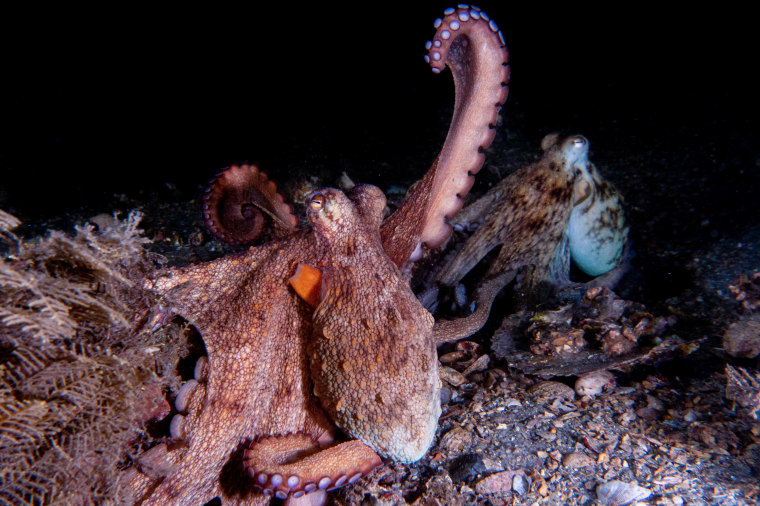Each minute of video took hours to analyze, Buresch said. All in all, the researchers cataloged 3,907 arm actions that required 6,871 arm deformations.
The inventory of the animals’ arm movement could help researchers better understand the neural connections that allow octopuses to coordinate their arms to work in different combinations and to receive feedback from the environment.

Octopuses have a complex and poorly understood nervous system, with nerves that run down each of their eight arms. Suckers on each arm give the animals a sense of touch, but also have chemoreceptors that allow them to essentially taste by touch.
“If I’m an octopus, I’m using my arms to run over surfaces, stick them in holes in the seafloor, looking in crevices in coral heads or rocky ledges and feeling around in there, but mostly tasting around in there to see what’s happening,” Buresch said.
Octopuses have a decentralized nervous system with more neurons in their arms than in their central brain, Buresch said.
“We’re all sort of starting to piece together the different parts of the puzzle that explain, How does this bizarre nervous system work?”








